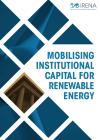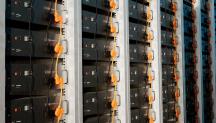

-
-
IRENA (2020), Mobilising institutional capital for renewable energy, International Renewable Energy Agency, Abu Dhabi.
Copied
/-/media/Files/IRENA/Agency/Publication/2020/Nov/IRENA_Mobilising_Institutional_Capital_2020.pdf?rev=92aa2646b392407f822167e8dfd048cb
Copied
Mobilising institutional capital for renewable energy
Newsletter
Meeting international climate and development objectives calls for a massive shift of capital into low-carbon technologies, including renewables. For the world to fulfil the climate goals set out in the Paris Agreement, total annual investments in renewable energy technologies would need increase from around USD 300 billion worldwide in recent years to almost USD 800 billion by 2050.
Institutional investors – including pension funds, insurance companies, sovereign wealth funds and other endowments and foundations – represent an enormous global capital pool that has yet to be harnessed for the energy transition.
This report from the International Renewable Energy Agency (IRENA) considers ways to attract institutional investors into the sector on the necessary scale. Its recommendations are aimed at policy makers, public capital providers, capital market regulators and other stakeholders, including major institutional investors that could channel capital into renewables.
Large-scale institutional investments would effectively inject long-term and relatively “patient” capital into renewables, lowering the overall financing costs for any given project. Renewable energy assets, in turn, can give institutional investors stable, long-term, “bond-like” returns.
The impact of the COVID-19 pandemic on global economic and financial systems has led institutional investors to look for new investments aligned with recovery plans. This could, in turn, boost capital allocations to renewable energy infrastructure to simultaneously hedge against climate risks.
Among other findings:
- Despite accounting for USD 87 trillion in assets under management, institutional investors have so far played a very minor role in financing renewables.
- Institutional capital still accounted for just 2% of total direct investment in renewables in 2018.About 20% institutional investors have invested in renewables indirectly through funds, while only 1% have invested directly.
- For direct investments, institutional capital shows a preference for relatively familiar technologies, such as wind and solar photovoltaic (PV) power generation.
- Unlocking institutional capital for renewables on a larger scale requires combined action on multiple fronts, including regulatory and policy solutions, capital market reforms, the creation of bankable project pipelines and changes of approach by institutional investors.
- As the climate changes and emissions become more restricted, renewable energy can help to reduce investor exposure to stranded assets.
- Institutional participation can create a positive feedback loop and help to attract other sources of capital for renewables.




